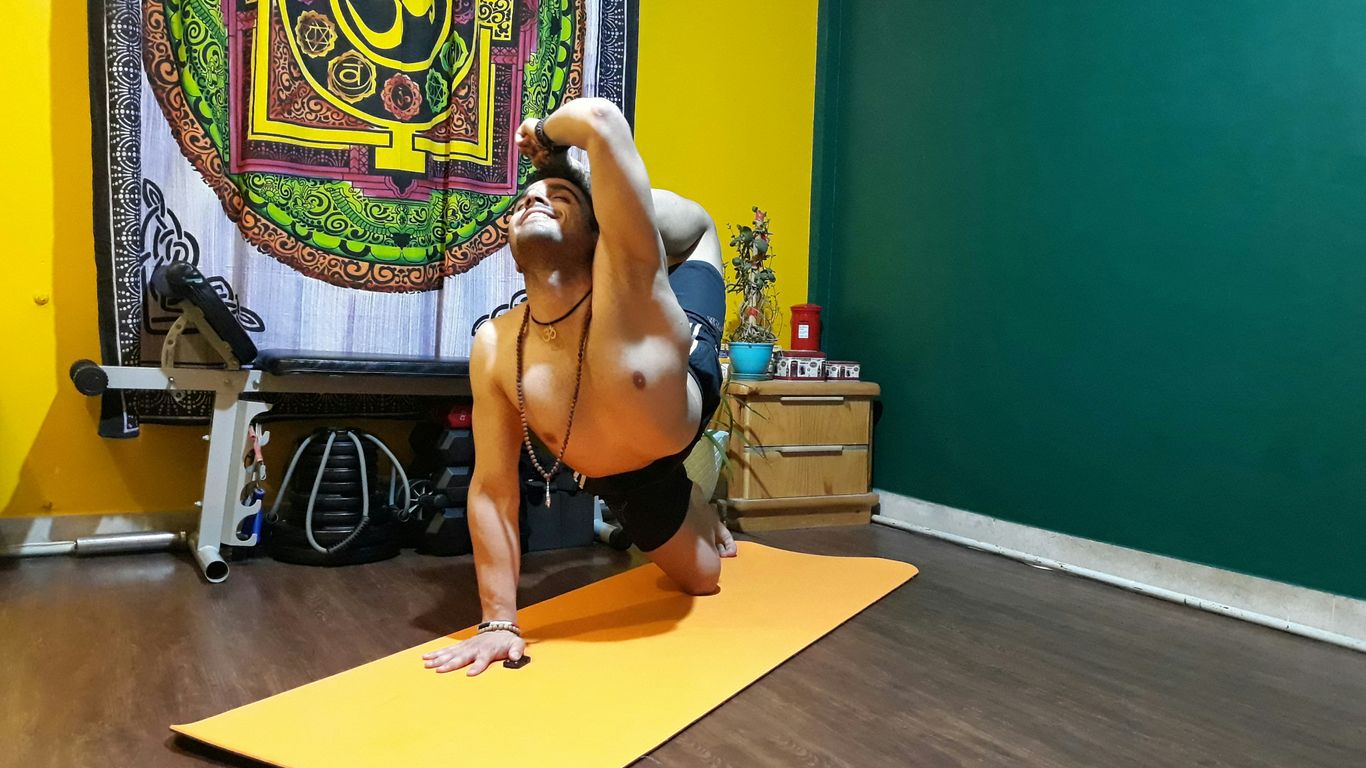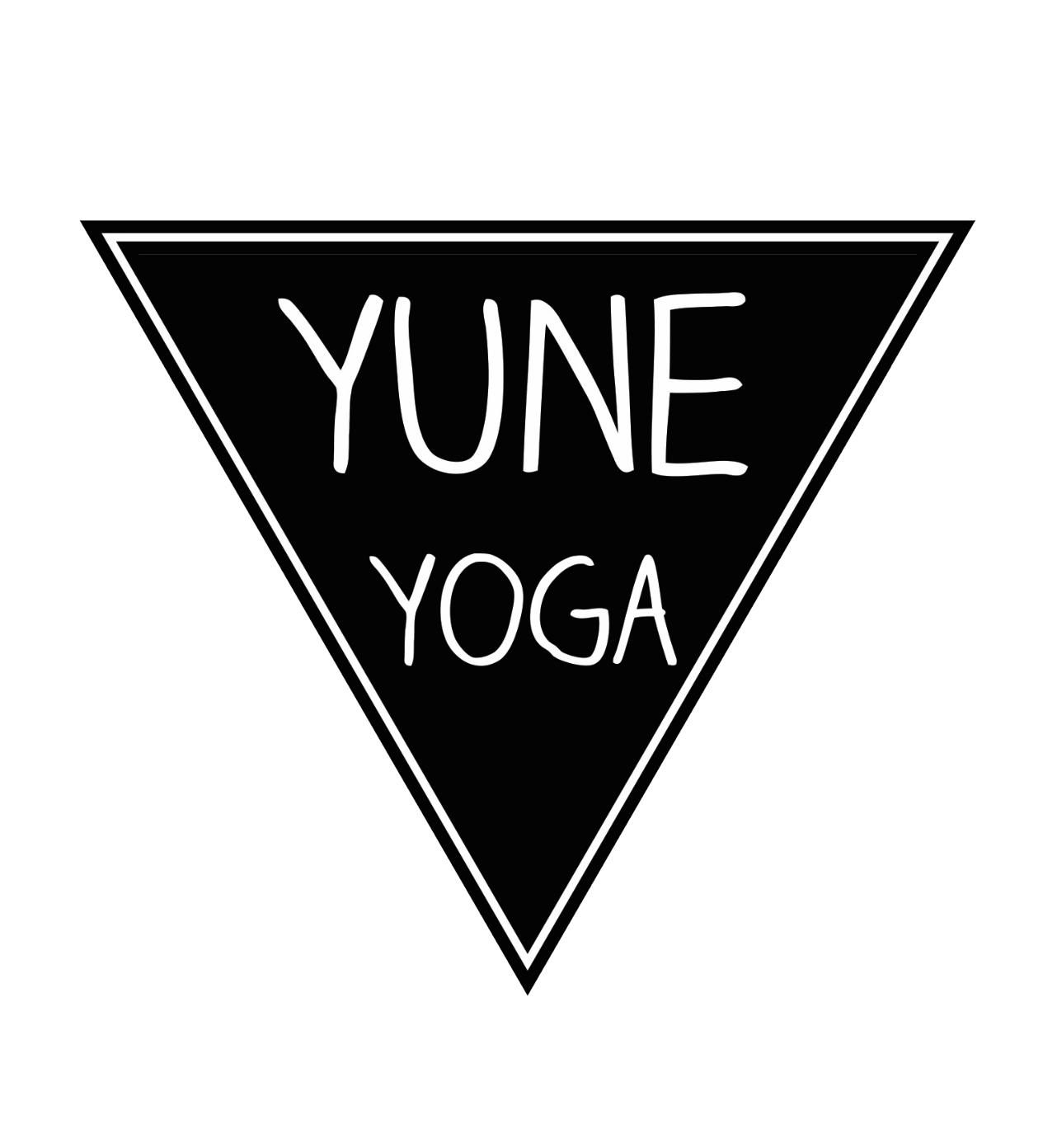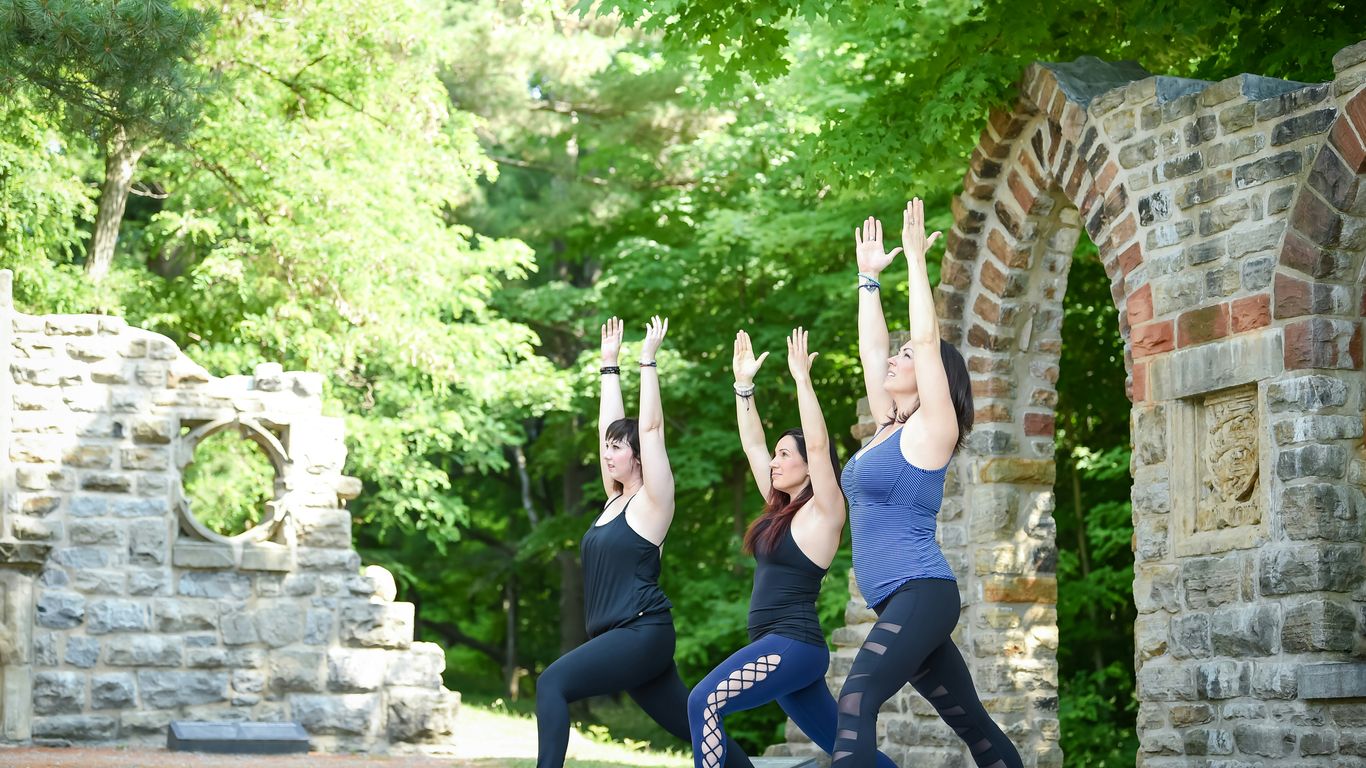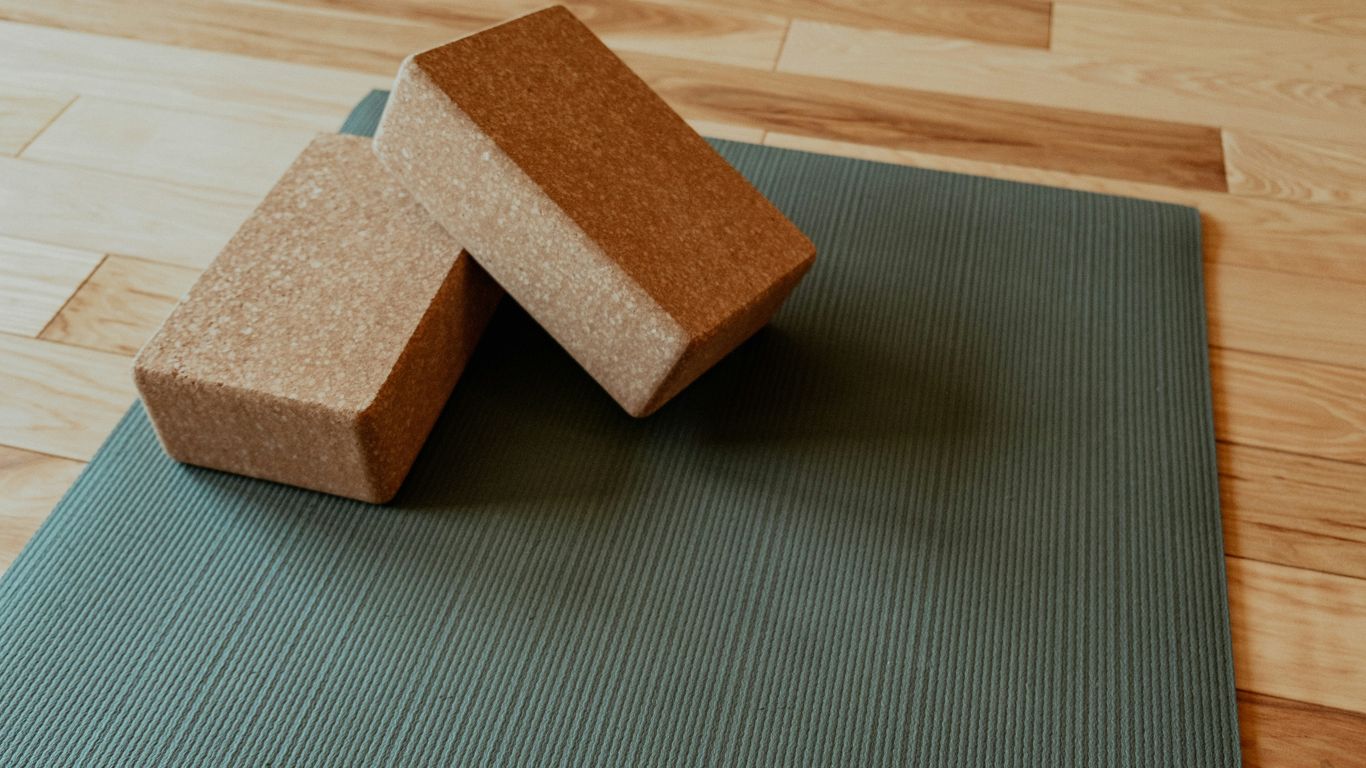
Discover the Benefits and Techniques of Bikrams Yoga
Thinking about trying Bikram Yoga? It's a style of yoga that's pretty well-known, partly because it's done in a super hot room. You might have heard about the specific set of poses and the intense workout it offers. This article will walk you through what Bikram Yoga is all about, from its beginnings to how you can get started. We'll look at why people are drawn to it and what you can expect from a class.
Key Takeaways
- Bikram Yoga, developed by Bikram Choudhury, is a specific sequence of 26 postures and two breathing exercises practiced in a heated room (around 105°F with 40% humidity).
- The heat is believed to help warm muscles, increase flexibility, and promote detoxification through sweating.
- Practicing Bikram Yoga can lead to improvements in strength, balance, flexibility, and cardiovascular function, while also helping to reduce stress.
- To start, stay hydrated, wear light clothing, and be prepared to listen to your body, taking breaks or modifications as needed.
- While the original Bikram Yoga sequence remains, the practice has evolved, with many studios now focusing on the heated yoga format while distancing themselves from the founder's controversies, aiming for more inclusive spaces.
Understanding The Origins Of Bikrams Yoga
So, you're curious about where Bikram Yoga actually came from, right? It's more than just a bunch of poses in a super hot room. This style of yoga, known for its intense heat and specific sequence, has a pretty interesting backstory. It all starts with a man named Bikram Choudhury.
Bikram Choudhury's Early Life And Yoga Journey
Bikram Choudhury was born in Calcutta, India, back in 1944. He got into yoga pretty young, starting his training at just three years old. His main teacher was Bishnu Ghosh, who happened to be the brother of the famous Paramahansa Yogananda. Ghosh's approach really focused on how yoga could help with physical health and mental clarity. A major turning point for Bikram was a serious knee injury he got while weightlifting when he was 20. He couldn't walk for a while, but he turned to his yoga practice. He developed a special set of 26 poses, and within six months, he was back on his feet. This experience really cemented his belief in yoga's healing power.
The Development Of The 26 Posture Sequence
After his recovery, Bikram continued to refine his yoga methods. He spent time in Japan in the early 1970s, where he started experimenting with practicing yoga in heated environments. He noticed that the warmth seemed to help people get deeper into their poses and improve their flexibility. This idea of a heated practice really took off when he brought it to the United States in 1971. He eventually opened the Bikram Yoga College of India in Los Angeles, and the practice quickly gained a following, especially among celebrities. The sequence itself is a carefully chosen set of 26 postures and two breathing exercises, designed to work the entire body systematically.
Bringing Bikrams Yoga To The United States
When Bikram Choudhury arrived in the U.S. in the early 1970s, he began teaching his unique style of yoga. His charismatic personality and the novelty of practicing in a room heated to about 105°F (40°C) with 40% humidity quickly attracted attention. This specific environment was intended to mimic the climate of India, where yoga has ancient roots. The practice was introduced to the United States and soon became a popular fitness trend, with studios popping up across the country. It offered a challenging yet structured approach to physical and mental well-being.
The core idea was that the heat would allow for a more intense workout, helping muscles stretch further and promoting a deep cleanse through sweat. It was a departure from many other yoga styles at the time.
Here's a quick look at the timeline:
- 1944: Bikram Choudhury born in Calcutta, India.
- Early 1960s: Suffers a severe knee injury, leading to the development of the 26-posture sequence.
- Early 1970s: Begins teaching in Japan, experimenting with heated rooms.
- 1971: Moves to the United States and starts popularizing Bikram Yoga.
- 1980s: Bikram Yoga gains widespread popularity across the U.S. and internationally.
The Core Philosophy Of Bikrams Yoga

Bikram Yoga isn't just about sweating it out in a hot room; there's a deeper philosophy at play. It's built on the idea that the intense heat isn't just for show. It's actually meant to help your body become more flexible, allowing you to move deeper into the postures. Think of it like warming up a rubber band – it stretches much better when it's warm, right? This heat also gets your blood flowing and helps you sweat out toxins, which proponents believe is good for overall health.
The Role Of Heat In Enhancing Flexibility
The 105°F (40°C) heat and 40% humidity are key. This environment is designed to warm your muscles and connective tissues, making them more pliable. This means you can achieve a greater range of motion in each pose than you might in a cooler setting. It's this controlled warmth that allows for the deep stretching that's characteristic of the practice.
Mindfulness And Discipline Through A Fixed Sequence
One of the defining features of Bikram Yoga is its set sequence of 26 postures and two breathing exercises. This isn't random; it's a deliberate order designed to work your entire body systematically. Practicing the same sequence every time means you can really focus on the details of each pose, your alignment, and your breath. It builds a strong sense of discipline and mental focus. You learn to be present in the moment, observing your body's responses without judgment.
The repetition of the sequence builds a unique kind of mental resilience. You learn to push through discomfort, not by brute force, but by staying present and focused on your breath and the instructions. It's a practice that teaches you about your own limits and how to work with them, rather than against them.
Therapeutic Benefits For The Entire Body
Each of the 26 postures is chosen for a reason. They're meant to stimulate every organ, nerve, and muscle in your body. The idea is that by systematically compressing and stretching different parts of your body, you improve circulation, detoxify, and strengthen yourself from the inside out. It's a full-body workout that aims to bring balance and improve function across all your bodily systems. Some people find it helps with things like:
- Improving posture
- Boosting metabolism
- Reducing muscle stiffness
- Balancing blood sugar levels
- Increasing stress tolerance
Key Elements Of A Bikrams Yoga Practice
So, what exactly makes Bikram Yoga, well, Bikram Yoga? It's not just about sweating it out in a hot room, though that's a big part of it. There are a few specific things that define this practice, making it pretty unique.
The Standardized Sequence Of 26 Postures
This is probably the most defining feature. Every single Bikram class, no matter where you go or who's teaching it, follows the exact same sequence of 26 postures, or asanas. It's always done in the same order, and it's designed to work your entire body. You'll do standing poses first, then move to the floor. It's a set routine, which can be both challenging and comforting. You know what to expect, and you can really focus on getting better at each pose over time.
The Importance Of Two Breathing Exercises
Before you even start the postures, you'll do two specific breathing exercises. The first is called pranayama, which is a deep breathing technique done standing up. It gets your body ready and focused. Then, at the very end of the class, there's Kapalabhati, a more vigorous breathing exercise that involves quick exhales. These breathing parts are not just filler; they're considered vital for preparing your body and mind for the practice and for helping you recover afterward. They really set the tone for the whole session.
The Significance Of The Heated Environment
This is the element most people talk about. Bikram Yoga classes are held in a room that's heated to about 105 degrees Fahrenheit (around 40 degrees Celsius) with 40% humidity. This intense heat is thought to help your muscles warm up and become more flexible, allowing you to go deeper into the poses. It also makes you sweat a lot, which some believe helps to flush out toxins. It's definitely an adjustment at first, and it makes the practice much more demanding, but it's a core part of the Bikram experience. It really pushes you to work with your body in a different way.
The combination of the fixed sequence, the specific breathing techniques, and the high heat creates a very distinct yoga experience. It's a system that's been the same for decades, aiming to provide a consistent and challenging workout that targets both physical and mental stamina. It's a practice that asks a lot of you, but many find the results well worth the effort.
Physical And Mental Benefits Of Bikrams Yoga
So, what exactly does Bikram Yoga do for you, physically and mentally? It's more than just sweating it out in a hot room, though that's definitely part of it. This practice can really make a difference in how your body feels and how your mind works.
Improved Strength, Range of Motion, And Balance
This yoga style is pretty good at building up your strength, especially in your lower body. You'll find yourself holding poses that really work your muscles, and over time, you'll notice you can hold them longer and with more control. It's not just about brute strength, though. The poses are designed to stretch your muscles too, which helps you move more freely. Think about reaching for something or bending down – you'll probably find it easier.
- Better Lower Body Strength: Holding poses like standing bow pose works your leg muscles hard.
- Increased Flexibility: The heat helps your muscles relax, allowing for deeper stretches, particularly in your hamstrings and spine.
- Enhanced Balance: Many poses require you to balance on one leg, which trains your stability over time.
Studies have looked into this, and they've found that people who practice Bikram yoga regularly show improvements in things like how far they can reach and how steady they are on their feet. It's like your body is getting a tune-up, becoming more capable and resilient.
Enhanced Cardiovascular Function And Stress Tolerance
Don't let the slow pace fool you; Bikram Yoga can give your heart a good workout. The heat makes your heart beat faster to circulate blood, which is similar to what happens during moderate aerobic exercise. This consistent effort can lead to a stronger heart and better circulation over time. Plus, dealing with the heat and the challenging poses teaches you to stay calm under pressure. You learn to breathe through discomfort, which is a skill that spills over into everyday life.
Practicing in a heated room, combined with the physical exertion, can push your cardiovascular system. This regular challenge may lead to improved stamina and a more efficient heart. It's a way to build resilience, not just in your muscles, but in your ability to handle stress too.
Increased Flexibility And Reduced Muscular Stiffness
This is probably one of the most talked-about benefits. The combination of specific stretching poses and the warm environment really works wonders for tight muscles. You know that feeling after sitting for too long, where everything feels a bit stiff? Bikram yoga helps to work that out. The heat allows your muscles to lengthen more easily, and the poses are held long enough to make a real difference. This can lead to less pain and a greater ability to move without feeling restricted. It's a great way to combat the stiffness that can come with age or a sedentary lifestyle, and it's something that many people find incredibly helpful for managing persistent pain.
Here's a quick look at what you might experience:
- Looser Hamstrings: Poses like standing forward bends and the tortoise pose target these often-tight muscles.
- More Supple Spine: Backbends and twists help to increase the range of motion in your spine.
- Reduced Joint Discomfort: By improving flexibility around joints, you might find everyday movements become smoother and less painful.
Getting Started With Bikrams Yoga
So, you're thinking about trying Bikram Yoga? That's awesome! It's a pretty unique experience, and honestly, showing up for your first class can feel a little daunting. But don't sweat it (well, you probably will, but that's part of the deal!). Here's a breakdown of what to expect and how to make your first few classes as smooth as possible.
Preparing For Your First Bikrams Yoga Class
First things first, hydration is your best friend. Start drinking extra water a day or two before your class. Seriously, don't wait until you get to the studio. You'll also want to eat a light meal a couple of hours before class, but avoid anything heavy right before you go in. Think of it like fueling up for a workout, but with a much hotter engine.
When it comes to what to wear, think light and breathable. Most people wear shorts and a tank top or sports bra. You'll want something that lets your skin breathe and doesn't get too heavy when you start sweating buckets. Also, bring a towel – a big one! You'll need it to wipe yourself down and maybe even to place under your mat if you tend to sweat a lot. A water bottle is a must, too. Some studios sell them, but it's always good to have your own.
Listening To Your Body During Practice
This is probably the most important piece of advice. The heat can be intense, especially at first. It's totally okay to feel dizzy, tired, or even a bit overwhelmed. The key is to listen to what your body is telling you. If you need to rest, rest. If you need to take a break and step out of the room for a minute, do it. No one is judging you. The instructors are there to guide you, but they also want you to practice safely.
Remember, this is a practice, not a competition. You're not expected to do every pose perfectly on your first try, or even your tenth. The goal is to show up, try your best, and be present. Some days will feel easier than others, and that's perfectly normal. Just focus on your breath and the instructions, and trust the process.
The Supportive Bikrams Yoga Community
One thing you might be surprised by is how welcoming the Bikram Yoga community can be. While the class itself is a solo journey on your mat, the people who practice it often form a strong bond. You'll see familiar faces at different classes, and most people are happy to share tips or just offer a friendly smile. Don't be afraid to ask questions before or after class if you're unsure about something. Most studios have a vibe where everyone is there to support each other's journey. It's a shared experience, and that can make a big difference when you're pushing yourself in a hot room for 90 minutes.
Here's a quick checklist for your first class:
- Water bottle
- Large towel
- Yoga mat (some studios rent them)
- Change of clothes for afterward
- An open mind!
The heat is designed to help your muscles warm up and become more pliable, allowing for a deeper stretch. It also encourages a significant amount of sweating, which some believe helps to detoxify the body. However, it's crucial to remember that pushing too hard in the heat can lead to dehydration or heat exhaustion, so respecting your body's signals is paramount.
The Evolution And Future Of Bikrams Yoga
Bikram Yoga, as many know it, has certainly seen its share of changes since it first landed on American shores. What started as a very specific, fixed sequence in a scorching hot room has, over time, branched out and adapted. It's kind of like how a popular song gets covered by different artists – the core is there, but each version brings something new.
Diversification Beyond The Original Sequence
While the original 26 postures and two breathing exercises remain the heart of what many associate with Bikram, the yoga world doesn't stand still. You'll find studios now offering variations. Some might tweak the temperature, others might add different poses, or even blend the heated practice with other styles like Vinyasa or Pilates. This evolution is partly driven by practitioners looking for different experiences and partly by studios wanting to appeal to a wider audience. It's about keeping the essence of heated yoga alive while making it more accessible. This shift reflects a broader trend in yoga's journey from its ancient roots to modern interpretations.
Addressing Challenges And Creating Inclusive Spaces
Let's be real, the practice hasn't been without its bumps. There have been significant challenges and controversies that have led many studios and practitioners to re-evaluate their connection to the original founder. This has spurred a movement towards creating more inclusive and welcoming environments. The focus has shifted for many towards the benefits of the practice itself – the heat, the discipline, the physical results – while actively working to build communities that feel safe and supportive for everyone, regardless of background or experience level. It's a conscious effort to separate the practice from past issues.
The Enduring Appeal Of Heated Yoga Practices
Despite everything, the core appeal of practicing yoga in a heated room hasn't really faded. There's something about the intense heat that really helps you sink deeper into stretches and encourages a serious sweat session, which many find incredibly detoxifying. It pushes you, for sure, but the feeling of accomplishment afterward is pretty powerful. Plus, the structured nature of the original sequence, even in its adapted forms, provides a sense of familiarity and routine that many people crave. It's this combination of physical challenge and mental focus that keeps people coming back to heated yoga classes.
- Physical Benefits: Increased flexibility, improved circulation, and detoxification through sweat.
- Mental Benefits: Enhanced focus, discipline, and stress reduction.
- Community Aspect: A shared experience that can build camaraderie among practitioners.
The future of heated yoga seems to be about finding a balance. It's about honoring the powerful physical and mental benefits that drew people to the practice in the first place, while also being mindful of creating spaces that are ethical, inclusive, and welcoming to all. The adaptability of the practice suggests it will continue to evolve, meeting people where they are.
Wrapping Up Your Bikram Journey
So, that's the lowdown on Bikram Yoga. It's a pretty intense practice, no doubt about it, with its signature hot room and set sequence of poses. Whether you're looking to boost your flexibility, build some strength, or just find a new way to challenge yourself mentally, Bikram offers a unique path. It's been around for a while, evolving and adapting, and while it's had its ups and downs, the core idea of using heat and specific postures for well-being still draws a lot of people in. If you're curious, give it a shot. Just remember to listen to your body, stay hydrated, and go in with an open mind. You might just surprise yourself with what you can achieve.
Frequently Asked Questions
What exactly is Bikram Yoga?
Bikram Yoga is a special kind of hot yoga. It involves doing the same 26 yoga poses and 2 breathing exercises every time. You do these in a room that's heated up really hot, usually around 105 degrees Fahrenheit, and it's also a bit humid. It's like a set routine designed to work your whole body.
Where did Bikram Yoga come from?
This style of yoga started in India a long, long time ago. A man named Bikram Choudhury learned yoga from his teacher there. Then, in the early 1970s, he brought this specific sequence and the hot room idea to the United States and started teaching it. That's how it became popular here.
What are the good things about doing Bikram Yoga?
Practicing Bikram Yoga can make you more flexible and stronger. It can also help you get better at balancing. Because you're in a hot room, you'll sweat a lot, which some people feel helps their muscles relax and can even help the body get rid of waste. It's also a good way to focus your mind and feel less stressed.
Can anyone try Bikram Yoga, even if they're new to yoga?
Absolutely! Bikram Yoga is made for everyone, no matter your experience level. The most important thing is to listen to your body. If a pose feels too hard or uncomfortable, it's okay to take a break or do a modified version. The teachers are there to help guide you.
What should I do to get ready for my first Bikram Yoga class?
Before you go, make sure to drink plenty of water so you don't get dehydrated. Wear light, comfortable clothes that you can move in easily. Try to come with an open mind, ready to try your best. Remember to pay attention to what your body is telling you during the class.
Has Bikram Yoga changed over time?
Yes, it has. While the original 26 poses are still a core part of it, some studios and teachers have started creating their own versions or adding different styles. There's also a bigger focus now on making sure everyone feels welcome and safe in the yoga space, even as people still enjoy the benefits of hot yoga.


